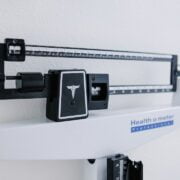
Breaking Through Your Weight Loss Plateau on the Keto Diet: Tips and Tricks
The ketogenic diet, or keto diet for short, has gained immense popularity in recent years for its effectiveness in promoting weight loss. This low-carb, high-fat diet involves drastically reducing carbohydrate intake and replacing it with fat. By doing so, the body enters a state of ketosis, where it burns fat for fuel instead of carbohydrates. Many people have experienced significant weight loss success on the Keto Diet. However, it is not uncommon to hit a weight loss plateau at some point during the journey.
Weight loss plateaus occur when the body adapts to the changes brought about by the keto diet and weight loss slows down or comes to a halt. This can be frustrating and demotivating for individuals who are trying to reach their weight loss goals. Understanding why these plateaus occur and how to overcome them is crucial for long-term success on the keto diet.
Key Takeaways
- Weight loss plateaus are common on the keto diet and can be caused by a variety of factors.
- Understanding the science behind weight loss plateaus can help you make adjustments to your diet and exercise routine.
- Reassessing your macros and caloric intake can help break through a weight loss plateau on keto.
- Incorporating intermittent fasting and exercise can also help jumpstart weight loss on the keto diet.
- Monitoring your sodium and electrolyte intake, addressing stress and sleep, and seeking support can all contribute to successful weight loss on keto.
Understanding the Science Behind Weight Loss Plateaus on Keto
When you first start the keto diet, your body goes through a significant metabolic shift. It begins to rely on fat for fuel instead of carbohydrates, which leads to rapid weight loss in the initial stages. However, as your body adapts to this new way of eating, it becomes more efficient at utilizing fat for energy. This can result in a slowdown in weight loss.
Additionally, hormones play a significant role in weight loss plateaus on the keto diet. When you restrict carbohydrates, insulin levels decrease, which can lead to a decrease in leptin levels as well. Leptin is a hormone that regulates hunger and metabolism. When leptin levels drop, your body may respond by conserving energy and slowing down your metabolism, making it harder to lose weight.
Reassessing Your Macros and Caloric Intake on Keto
Tracking macros and calories is essential on the keto diet, especially when you hit a weight loss plateau. It is possible that you may need to reassess your macros and caloric intake to break through the plateau. One common mistake people make is consuming too many calories, even if they are following a low-carb diet. Remember, weight loss ultimately comes down to a calorie deficit.
To break through a weight loss plateau, you may need to adjust your macros and reduce your caloric intake. This can be done by reducing portion sizes, cutting back on high-calorie foods, or increasing your activity level. It is important to find the right balance that works for your body and goals.
Incorporating Intermittent Fasting on the Keto Diet
| Metrics | Results |
|---|---|
| Weight Loss | Effective |
| Blood Sugar Control | Improved |
| Insulin Sensitivity | Increased |
| Cholesterol Levels | Improved |
| Energy Levels | Stable |
| Mental Clarity | Enhanced |
Intermittent fasting is a popular eating pattern that involves cycling between periods of fasting and eating. It has been shown to have numerous health benefits, including weight loss. When combined with the keto diet, intermittent fasting can be a powerful tool for breaking through weight loss plateaus.
Intermittent fasting helps to increase insulin sensitivity and promote fat burning. By extending the fasting period, your body has more time to deplete glycogen stores and enter ketosis. This can help jumpstart weight loss and overcome plateaus.
To incorporate intermittent fasting into your keto routine, you can start by gradually increasing the fasting window. Begin with a 12-hour fast overnight and gradually work your way up to longer fasting periods, such as 16 or 18 hours. It is important to listen to your body and adjust the fasting window as needed.
The Importance of Exercise on the Keto Diet
While diet plays a significant role in weight loss on the keto diet, exercise is also crucial for optimal results. Regular physical activity helps to increase calorie expenditure, build lean muscle mass, and improve overall health.
When it comes to breaking through a weight loss plateau on the keto diet, incorporating exercise can be beneficial. Exercise helps to increase energy expenditure and boost metabolism, which can help overcome plateaus. Additionally, strength training exercises can help build muscle, which in turn increases your resting metabolic rate.
To incorporate exercise into your keto routine, aim for a combination of cardiovascular exercises and strength training. Find activities that you enjoy and make it a priority to be consistent with your workouts. Remember, even small amounts of exercise can make a difference in breaking through a weight loss plateau.
Exploring Alternative Keto Foods and Recipes

One of the challenges of the keto diet is the limited food options, especially when it comes to carbohydrates. However, there are plenty of alternative keto foods and recipes that can add variety to your diet and help you break through a weight loss plateau.
Instead of relying solely on traditional keto foods like meat, eggs, and cheese, explore other options such as low-carb vegetables, nuts and seeds, and healthy fats like avocados and coconut oil. There are also many keto-friendly snacks and meals available in stores or online that can provide convenience and variety.
Experimenting with new recipes and flavors can make the keto diet more enjoyable and sustainable in the long run. Look for keto-friendly cookbooks or websites for inspiration and try incorporating new ingredients into your meals.
Monitoring Your Sodium and Electrolyte Intake on Keto
When following the keto diet, it is important to pay attention to your sodium and electrolyte intake. The reduction in carbohydrate intake can lead to a decrease in insulin levels, which causes the kidneys to excrete more sodium. This can result in an electrolyte imbalance, leading to symptoms such as fatigue, muscle cramps, and headaches.
To prevent these symptoms and support optimal weight loss on the keto diet, it is crucial to monitor your sodium and electrolyte intake. You can do this by adding salt to your meals or consuming electrolyte-rich foods such as leafy greens, avocados, and bone broth. Additionally, consider taking a magnesium supplement to ensure you are meeting your daily requirements.
Addressing Stress and Sleep for Optimal Weight Loss on Keto
Stress and sleep play a significant role in weight loss on the keto diet. Chronic stress can lead to an increase in cortisol levels, which can hinder weight loss efforts. Additionally, lack of quality sleep can disrupt hormone regulation and metabolism, making it harder to lose weight.
To optimize weight loss on the keto diet, it is important to address stress and prioritize sleep. Find healthy ways to manage stress, such as practicing mindfulness or engaging in relaxation techniques. Make sleep a priority by establishing a consistent bedtime routine and creating a sleep-friendly environment.
Seeking Support and Accountability on the Keto Diet
Embarking on a weight loss journey can be challenging, especially when faced with plateaus. Seeking support and accountability can make a significant difference in staying motivated and overcoming obstacles.
Consider finding a support system, such as joining online communities or finding a keto buddy who can provide encouragement and share experiences. Having someone to hold you accountable can help you stay on track and navigate through weight loss plateaus.
Staying Motivated and Focused During Your Keto Weight Loss Journey
Finally, staying motivated and focused is crucial for long-term success on the keto diet. It is important to celebrate small victories along the way and set realistic expectations. Remember that weight loss is not linear, and plateaus are a normal part of the process.
Set realistic goals and track your progress to stay motivated. Celebrate non-scale victories such as increased energy levels or improved mental clarity. Surround yourself with positive influences and remind yourself of why you started this journey in the first place.
In conclusion, weight loss plateaus are common on the keto diet but can be overcome with the right strategies. By reassessing your macros and caloric intake, incorporating intermittent fasting, exercising regularly, exploring alternative keto foods, monitoring sodium and electrolyte intake, addressing stress and sleep, seeking support and accountability, and staying motivated and focused, you can break through plateaus and continue on your weight loss journey. Remember that everyone’s body is different, so it may take some trial and error to find the strategies that work best for you. Stay committed, be patient, and trust the process.
FAQs
What is the Keto Diet?
The Keto Diet is a low-carb, high-fat diet that aims to put the body in a state of ketosis, where it burns fat for energy instead of carbohydrates.
What is a weight loss plateau?
A weight loss plateau is a period of time where a person’s weight loss progress stalls, despite continued efforts to lose weight.
Why do people experience weight loss plateaus on the Keto Diet?
People may experience weight loss plateaus on the Keto Diet because their body has adapted to the new way of eating and has become more efficient at burning fat for energy. This can lead to a decrease in the number of calories burned, making it harder to lose weight.
How can I break through a weight loss plateau on the Keto Diet?
To break through a weight loss plateau on the Keto Diet, you can try increasing your physical activity, reducing your calorie intake, or changing up your meal plan to include more variety.
Is it normal to experience a weight loss plateau on the Keto Diet?
Yes, it is normal to experience a weight loss plateau on the Keto Diet. It is a common occurrence and can be overcome with patience and persistence.
How long do weight loss plateaus on the Keto Diet typically last?
Weight loss plateaus on the Keto Diet can last anywhere from a few days to several weeks. It is important to stay committed to the diet and continue making healthy choices during this time.


















